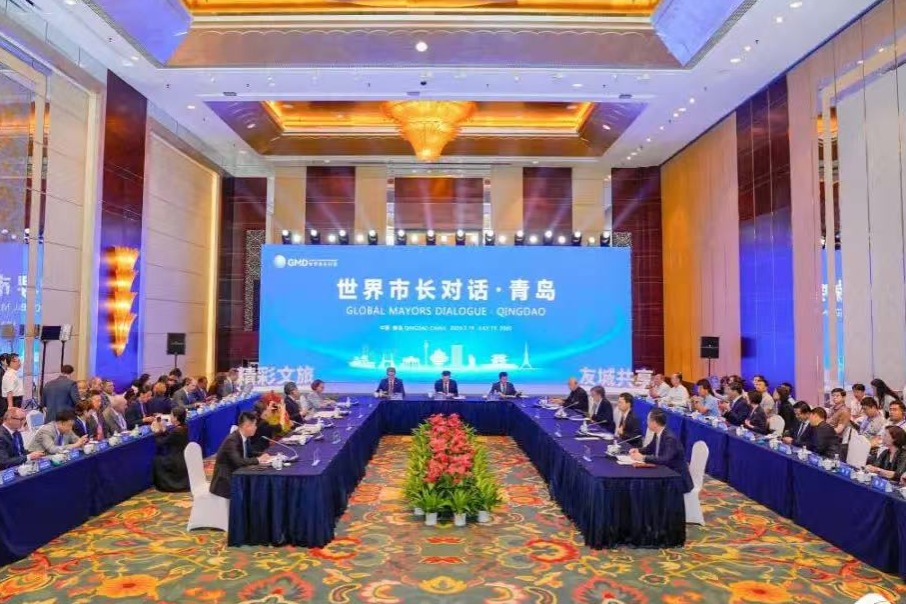Exports now target all consumers

Unlike in the past, today's products from China include a range of pocket-friendly items that fit every household budget in Africa
Chinese products are everywhere across the African market - at least two of every three products sold or displayed in superstores are sourced from China.
These products have one common feature that endears them to consumers - they target the mass market on the continent that had for a long time been neglected by some of the local and foreign manufacturers that used to view them as having no purchasing power.
Interestingly, most of the Chinese products exported to Africa fit everyone's needs. All consumers, rich or poor, are targeted depending on the cost of the Made-in-China products.
These products in the African market include renowned brands, which two decades back used to be manufactured in the United States, Europe and Asia.
Some of these products include mobile phones and household goods such as dishes, cups, utensils, televisions, gas cookers, microwaves, radio, DVDs, clothes and purses.
Chinese exports to Africa have, indeed, overtaken products that used to be imported from countries such as India, Germany, the US, the UK, France, Indonesia and Japan.
Chinese products have overtaken competition from developed countries and have taken the African market by storm basically due to the relatively low cost of labor, advanced technology, superior infrastructure and availability of resources.
All these factors combined to make China the best place to manufacture products, especially companies in developed countries where the cost of manufacturing the same product is relatively higher.
A study done by McKinsey in 2015 indicates that Chinese companies handle 12 percent of Africa's industrial production, valued at $500 billion a year. Indeed, China's trade with Africa increased from $13 billion in 2001 to $188 billion in 2015 - an average annual growth of 21 percent.
So far, a number of Chinese firms are relocating to Africa, mainly due to the relatively high margins on a range of products. Moreover, 31 percent of these firms are in manufacturing while 25 percent in services, and 15 percent in construction and real estate.
China-Africa bilateral trade has been steadily increasing for the past two decades despite a slump caused by the 2008 financial crisis and weak commodity prices since 2014.
In 2015, South Africa was the largest buyer of Chinese goods, followed by Nigeria and Egypt. However, other countries such as Kenya, Somalia, Ethiopia, Botswana, Angola, Senegal and Uganda are also emerging as keen consumers of Chinese products.
China accounted for just 1.8 percent of African imports in 1992, but by 2013, China become the continent's largest source of imports - sending three times as many goods as either of Africa's traditional trading partners, the US and Germany.
According to UN Comtrade data, Chinese exports to Africa reached $103 billion in 2015 but some researchers argue that the real amount could be as much as 60 percent higher than official figures, given how much is underreported or smuggled in luggage.
Indeed, thousands of wholesale and retail traders sell clothing, electronics, fabric and more that come from China mainly due to the pocket-friendly items that fit every household budget, unlike in the past when the goods were expensive and only a few could manage to buy them.
Businesses that travel to China to source products say the Chinese products fit all consumer segments, depending on how much one can afford. Purses, dresses and suits displayed in neighborhood malls are branded, "Made in the PRC," a deliberately vague label that shoppers often don't realize refers to the People's Republic of China.
It's easier to import goods from China to Africa than ever before. The cheap products that most African traders used to flood the market with are no longer available, thanks to adhering to strict standards in importing countries.
Also, Chinese traders who have set up shop across Africa, selling to African traders or directly to customers, are also getting hit by weak local currencies and growing competition from other Chinese and African traders. In South Africa, home to Africa's largest Chinese community, Chinese traders are moving to less saturated markets in Africa or returning home.
The writer is an economist at Zimsky Consultants, Kenya. The views do not necessarily reflect those of China Daily.
(China Daily European Weekly 08/18/2017 page9)
Today's Top News
- Mayors from around the world gather in Qingdao for dialogue
- Premier announces construction of Yarlung Zangbo hydropower project
- Digital countryside fueling reverse urbanization
- 'Sky Eye' helps unlock mysteries of the universe
- China offers LAC development dividend
- Future sectors to receive more play































